Try this palitaw recipe for delicious, authentic, easy-to-make palitaw that tastes just like the ones from home. Perfectly chewy, sweet and coconut-y, you’ll keep coming back for more.
(Love making traditional Filipino kakanin? Try this delicious pichi-pichi recipe or make cassava cake with macapuno for a uniquely mouthwatering treat.)
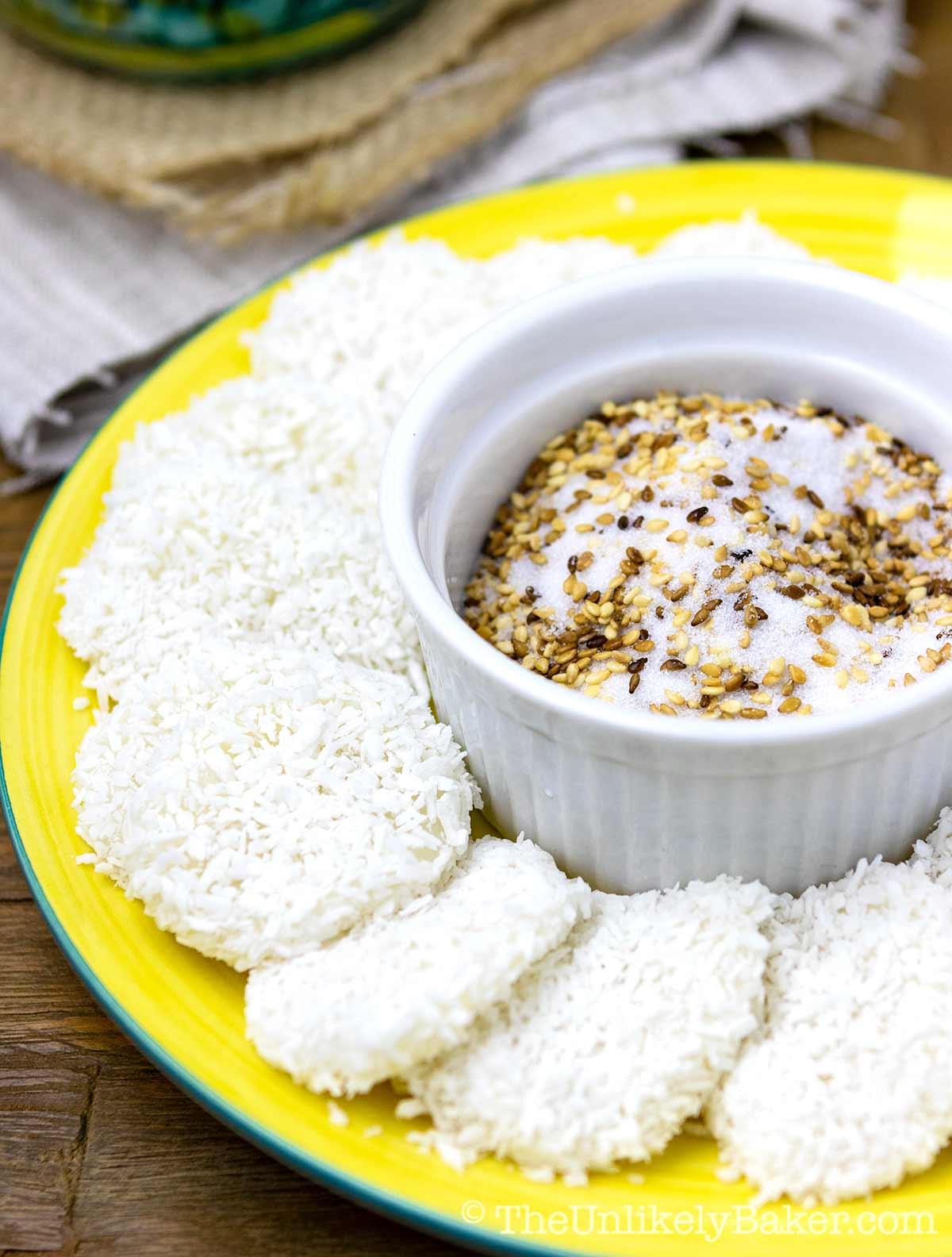
Palitaw is a popular rice cake in the Philippines. They’re boiled, rolled in coconut then sprinkled with sugar and toasted sesame seeds.
It’s available everywhere — the local market, your favourite street vendor — though my favourite memory of palitaw is when my cousins and I would make them with our grandma.
Lemme tell you, rolling rice balls is a fun thing to do on a Sunday afternoon!
It’s still fun to do now that I’m all grown up and living far (too far) from home. Happily, I can find palitaw ingredients easily here so it’s quick and convenient to make whenever the craving hits.
It’s a delicious, sentimental, childhood favourite.
What is palitaw
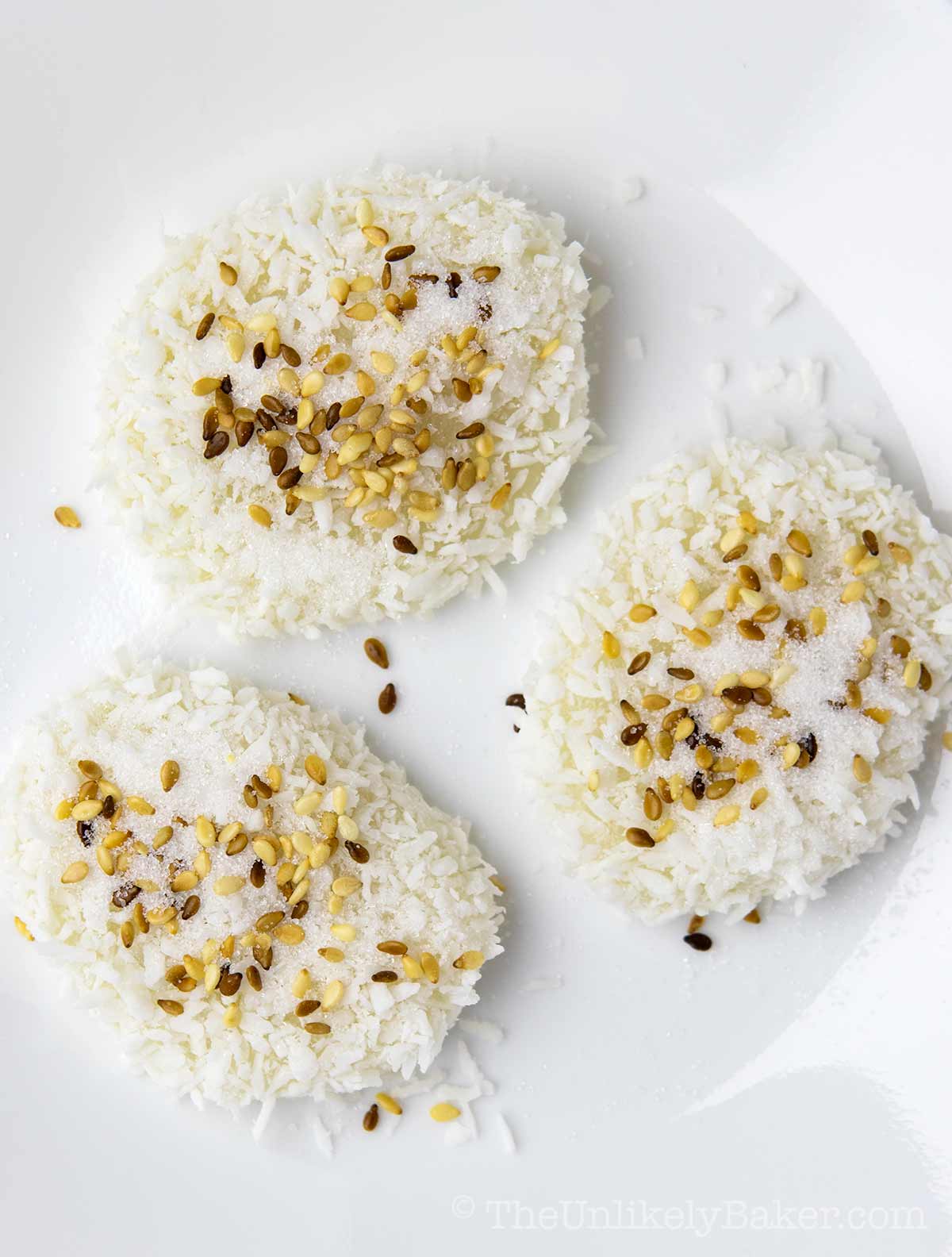
Palitaw in english loosely translates to “to appear” or “to show”. And this snack is named that because you’d know they’re cooked when they float to the top of your pot. Once they appear, they’re done!
Traditionally, palitaw is made from rice grains soaked in water, ground, made into a dough, which is then formed into circular cakes.
Not a lot of people do this anymore though because you can easily buy glutinous rice flour (sometimes called sweet rice flour) in the supermarket these days.
And while palitaw is enjoyed as an everyday snack or merienda, you’ll also often see it served on special occasions like Christmas, especially on New Year’s Eve.
Filipinos believe it’s good luck to serve and eat something sweet, for a bountiful year ahead, and something sticky, so that loved ones stay close.
Palitaw is especially revered in some families because it floating to the top represents luck floating to the surface. We’re a superstitious bunch, huh? LOL.
Regardless, I love palitaw because they’re delicious.
Why this recipe works
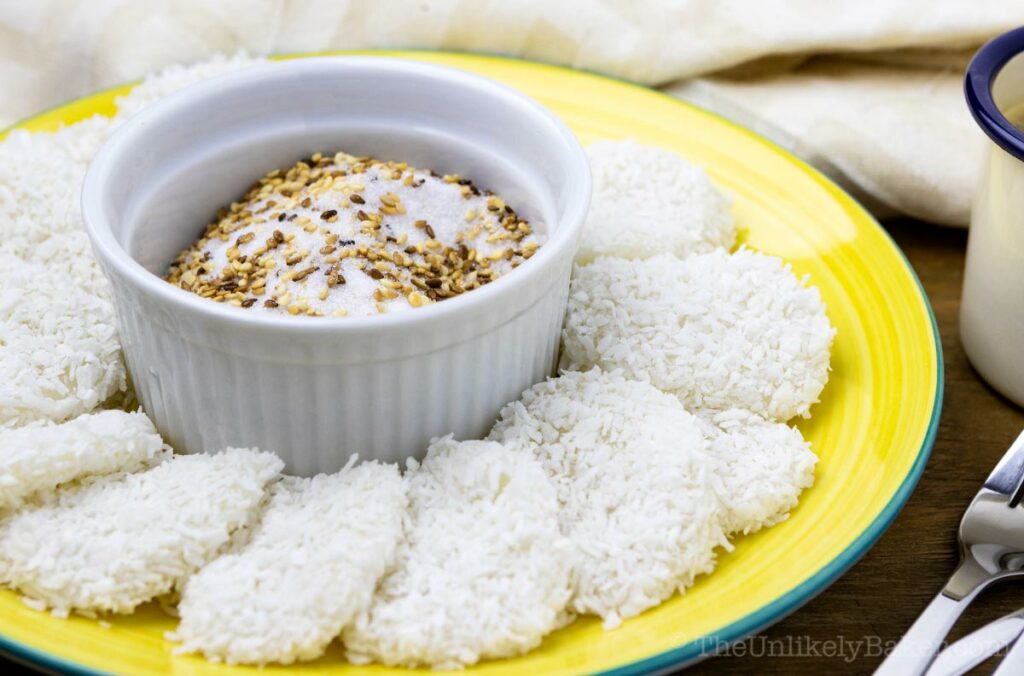
And you’ll love making this palitaw recipe too.
- This recipe is so easy to make. Just 2 ingredients to make your dough, no baking needed, and this big batch is done cooking in about 15 minutes. Perfect for parties and get togethers.
- It keeps well. Unlike other palitaw recipes, my recipe keeps well (storage notes below). You can make them today and serve this weekend.
- Customizable. It’s also very customizable. Unlike baked desserts where you have to be very precise, making palitaw has more room for food experiments. Want palitaw with cheese? Try rolling your rice cakes in cheese instead of coconut, or both. Wondering about ube palitaw or a flavoured palitaw recipe? Add ube extract, or your favourite flavour like pandan, to the dough. Delicious possibilities are endless.
How to make palitaw using glutinous rice
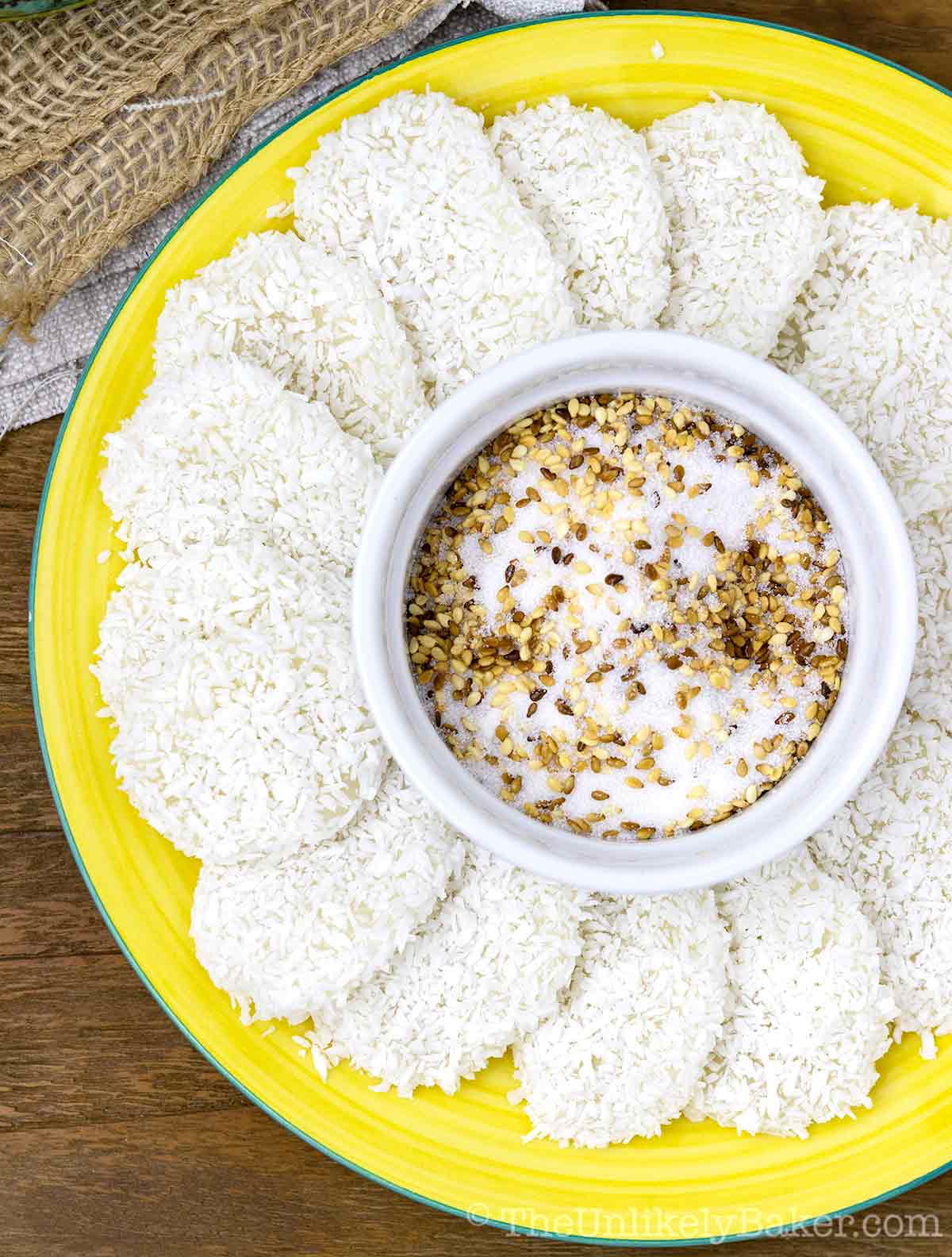
My recipe is palitaw with desiccated coconut or unsweetened shredded coconut (sometimes I also use medium coconut). They’re the most commonly available here so that’s what I always use. They’re also the best for extending the shelf life of palitaw.
Ingredients
To make palitaw recipe with desiccated coconut, you’ll need:
- Granulated sugar
- Sesame seeds, toasted
- Glutinous rice flour or sweet rice flour
- Water
- Unsweetened desiccated coconut and like I said, unsweetened medium coconut or unsweetened shredded coconut works too
Cooking tools
You don’t need special tools to make palitaw. Just a medium-sized pot, mixing bowls, measuring cups and spoons.
A melon baller and a slotted spoon do come in very handy.
Easy recipe with step-by-step photos
1 TOPPINGS. In a small bowl, combine granulated sugar and toasted sesame seeds. Set aside.
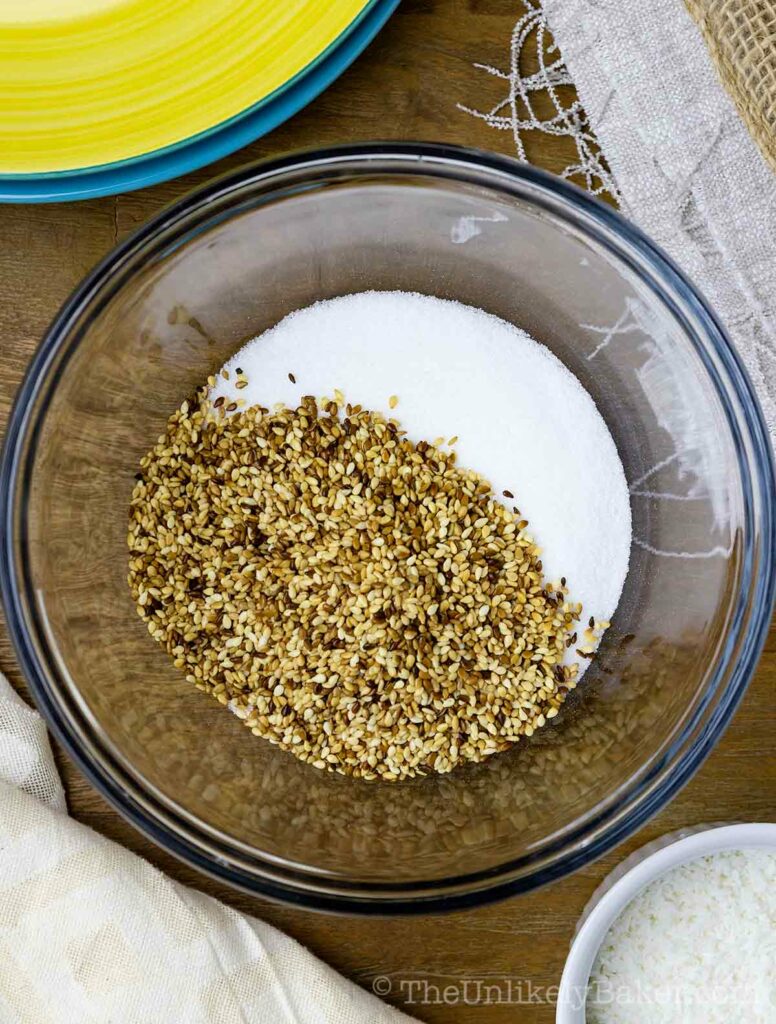
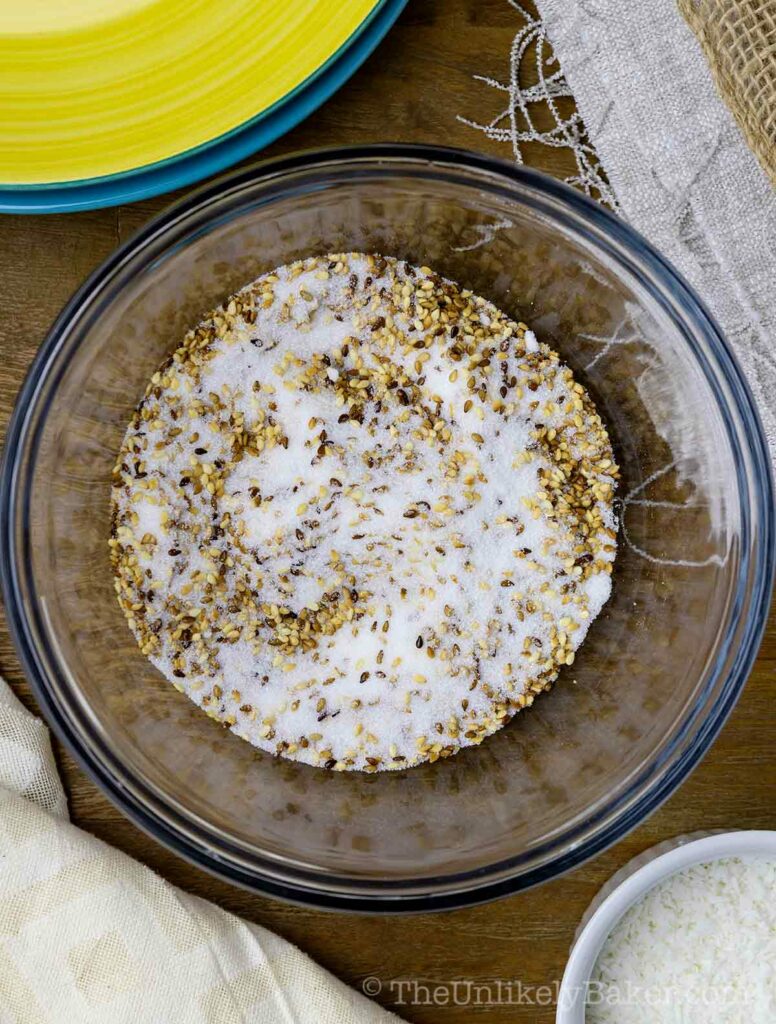
2 DOUGH. In a large bowl, combine glutinous rice flour and water and knead until it comes together in a soft, smooth, pliable dough.
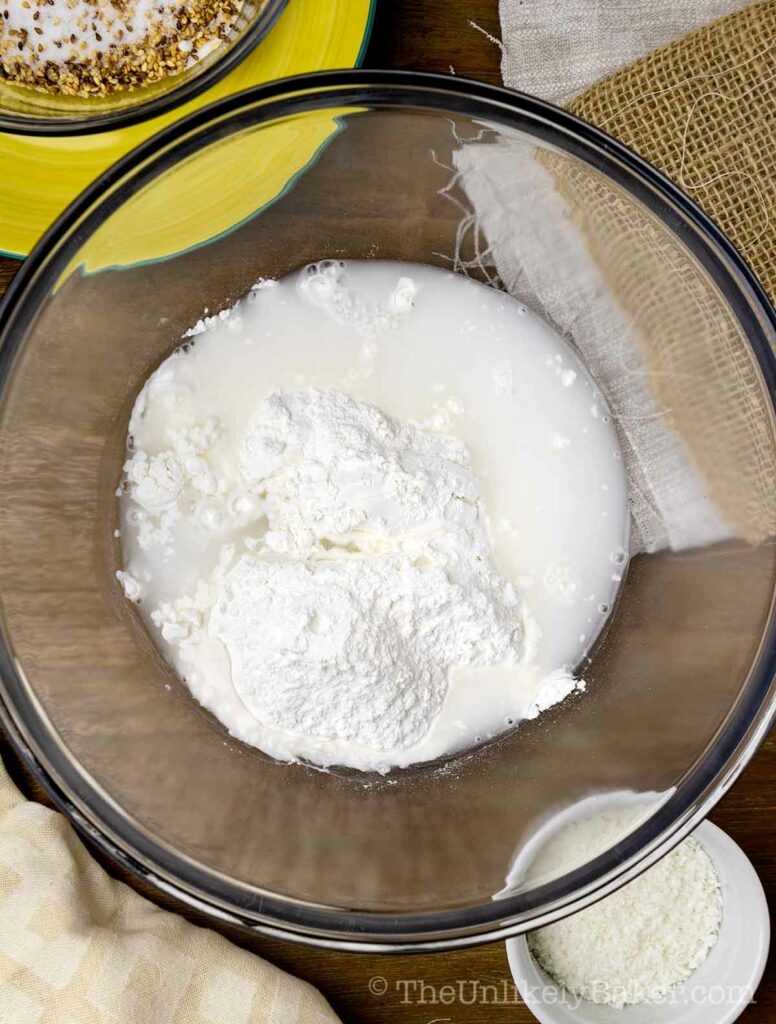
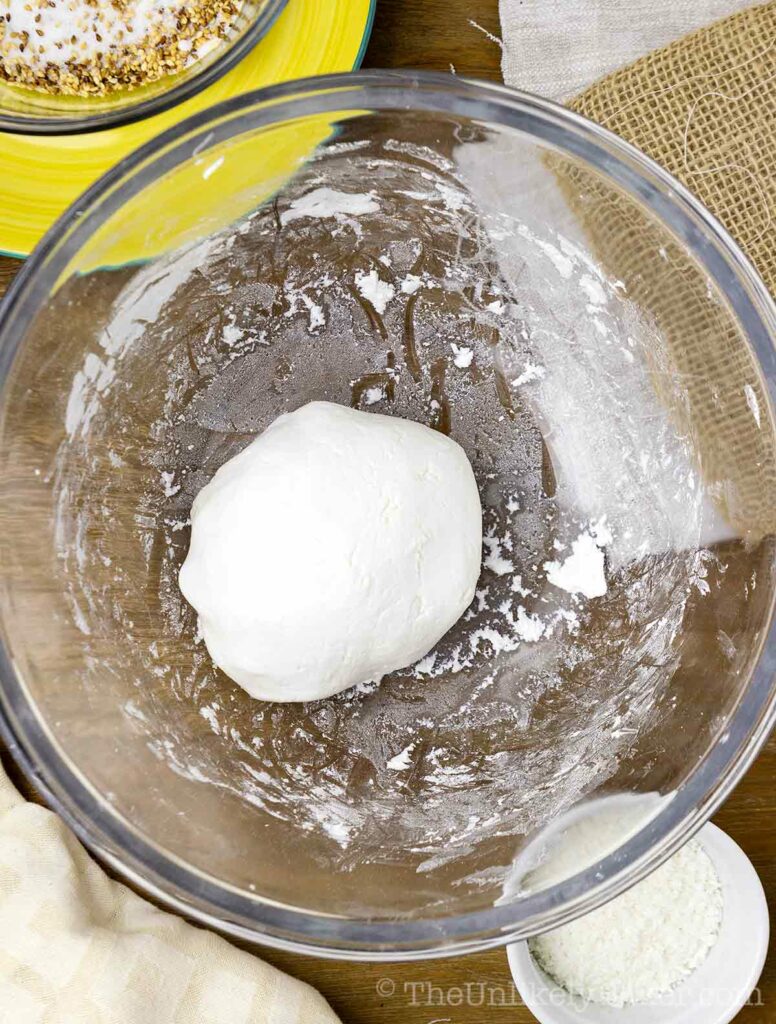
3 ROLL AND FLATTEN. Scoop and roll the dough into small balls using your hands then flatten into an oval about ¼-inch thick.
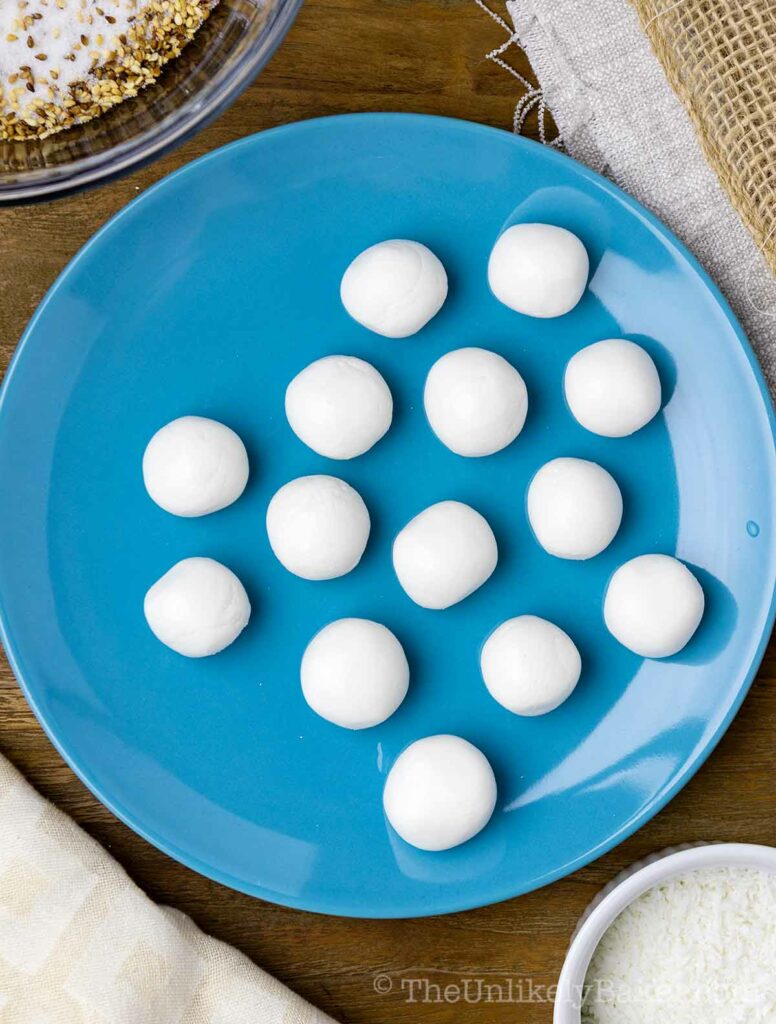
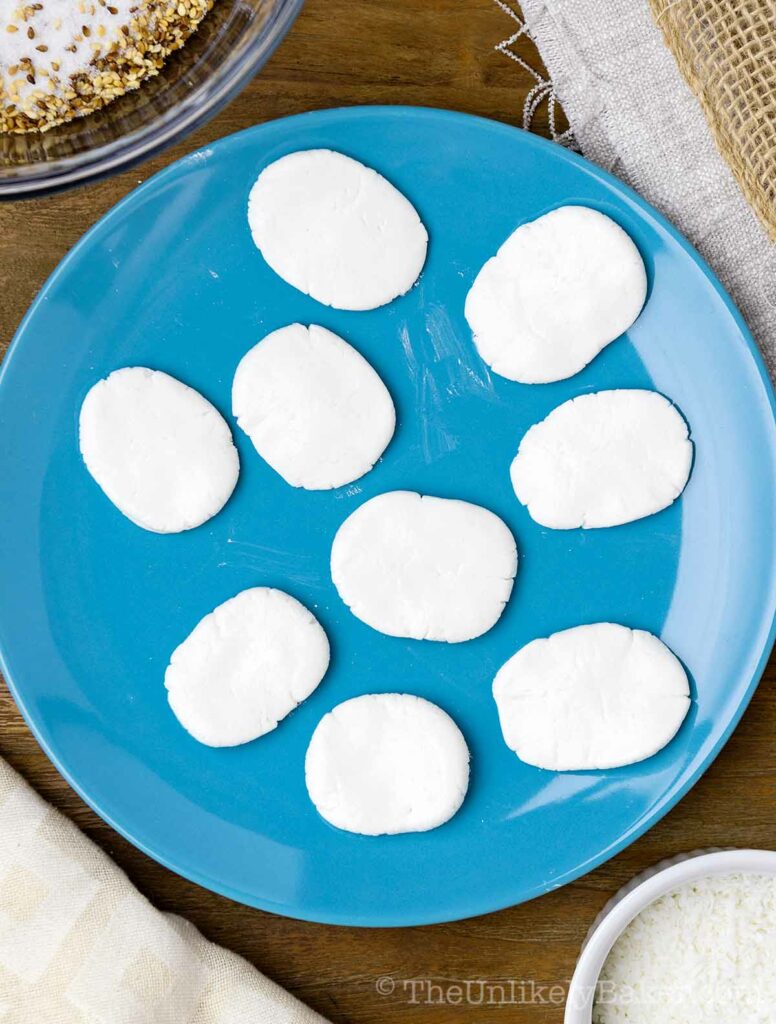
4 BOIL. Drop each palitaw into a pot of boiling water and cook until the palitaw floats to the surface. Repeat until you’ve cooked all of the rice cakes.
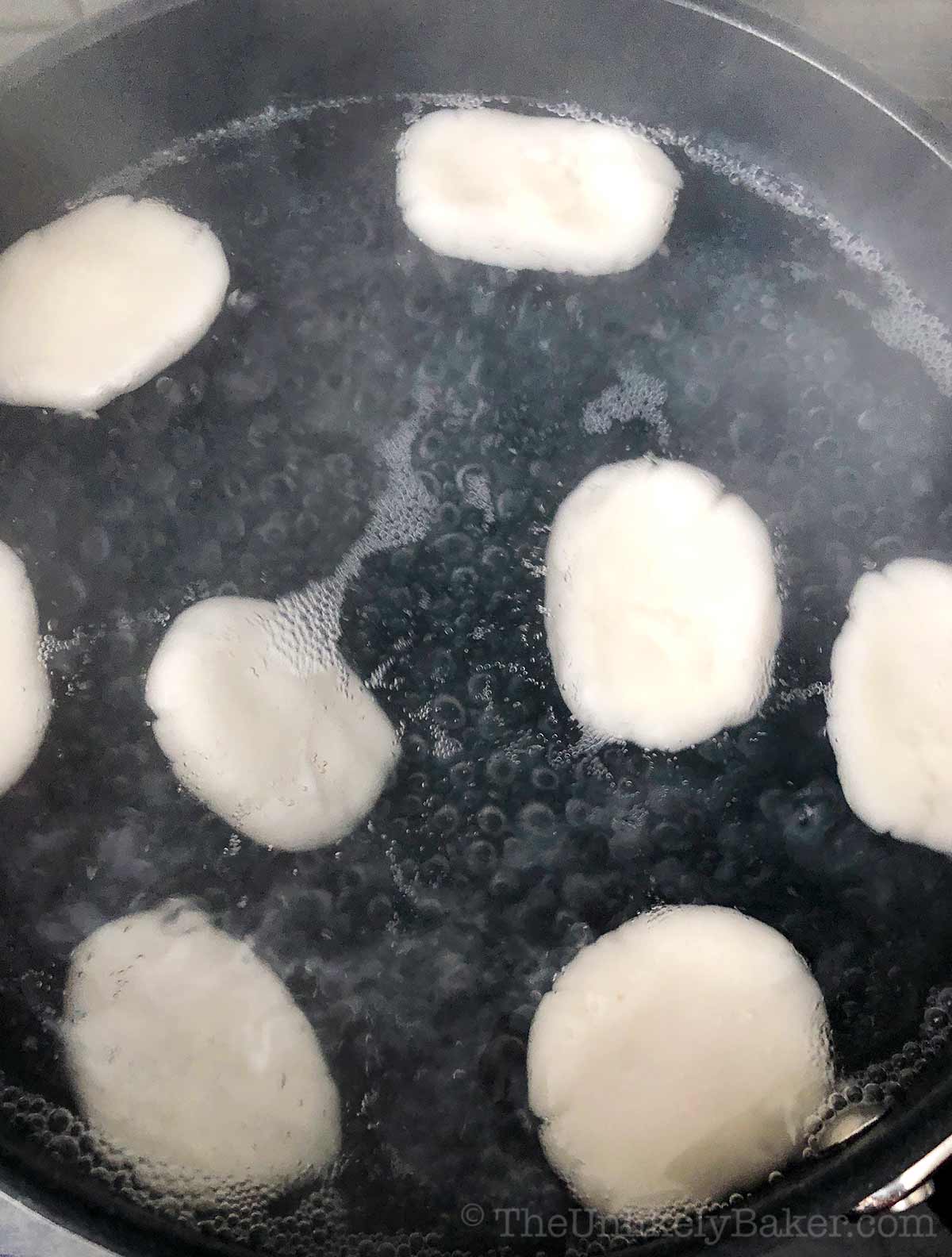
5 DRAIN. Scoop the cooked palitaw using a slotted spoon and drain well by placing on a sheet of parchment paper. Space evenly so they don’t stick together.
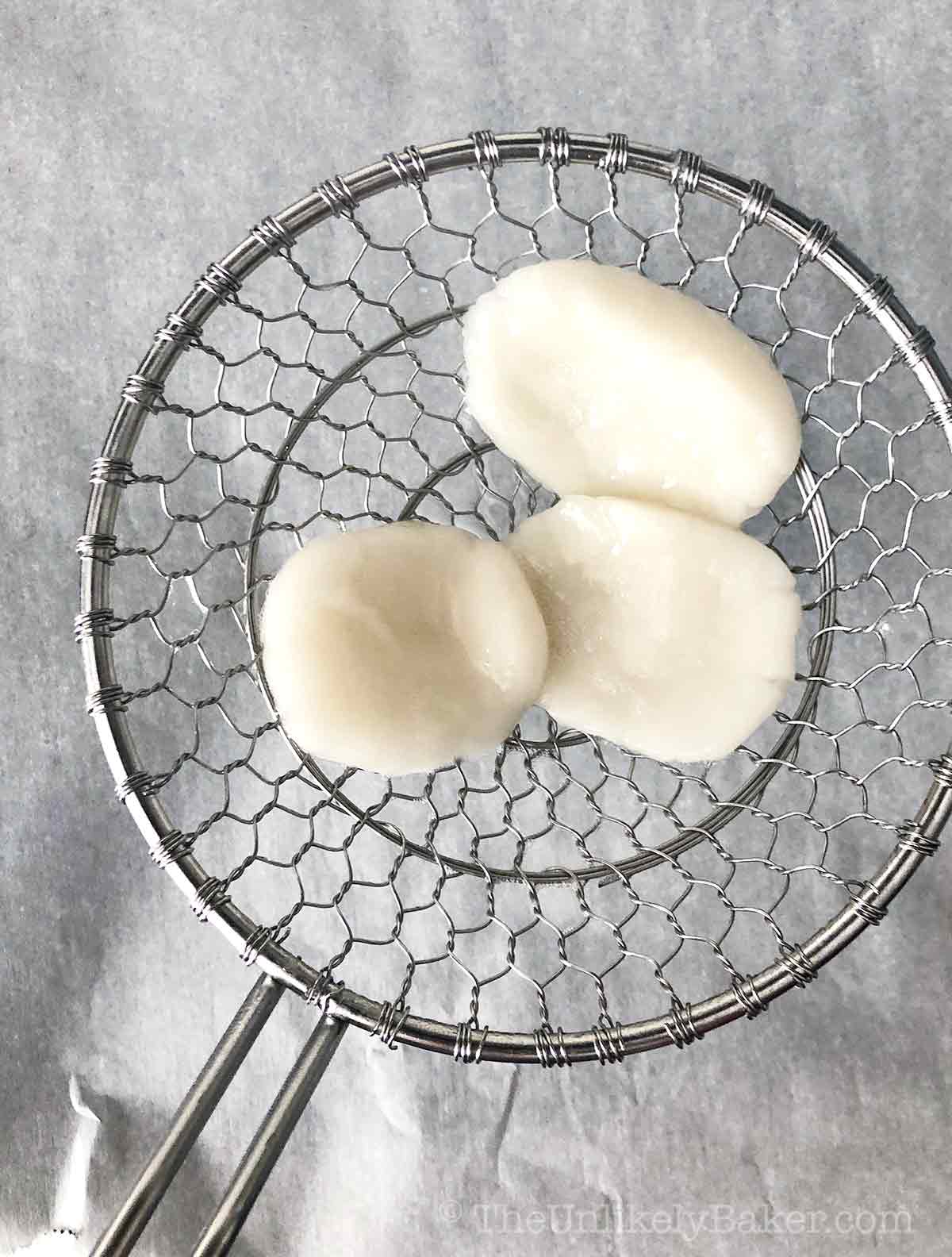
6 COAT. While still warm, coat the palitaw in shredded coconut.
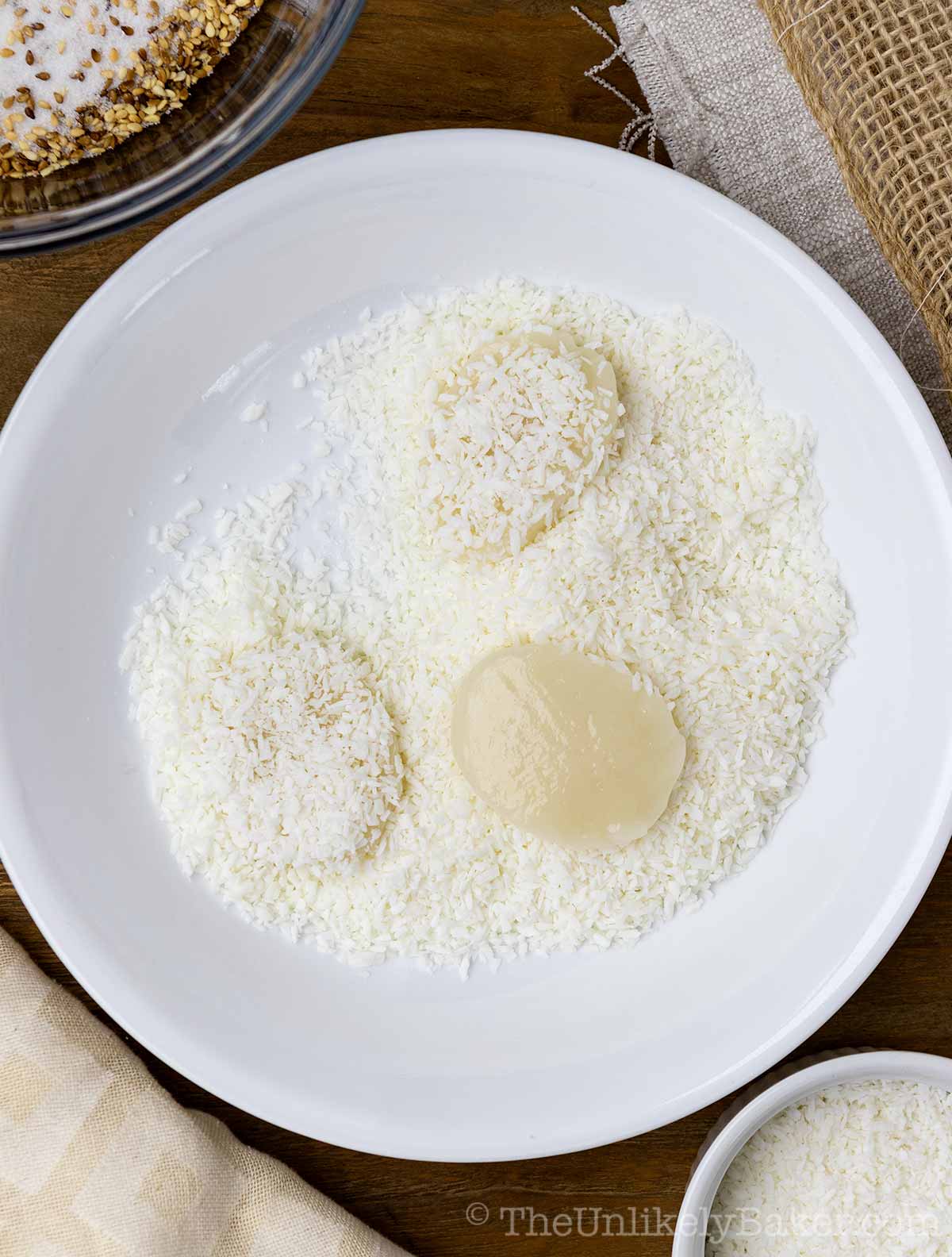
7 SERVE. And when ready to serve, sprinkle with your sugar-sesame seed mixture. Enjoy!
Expert tips
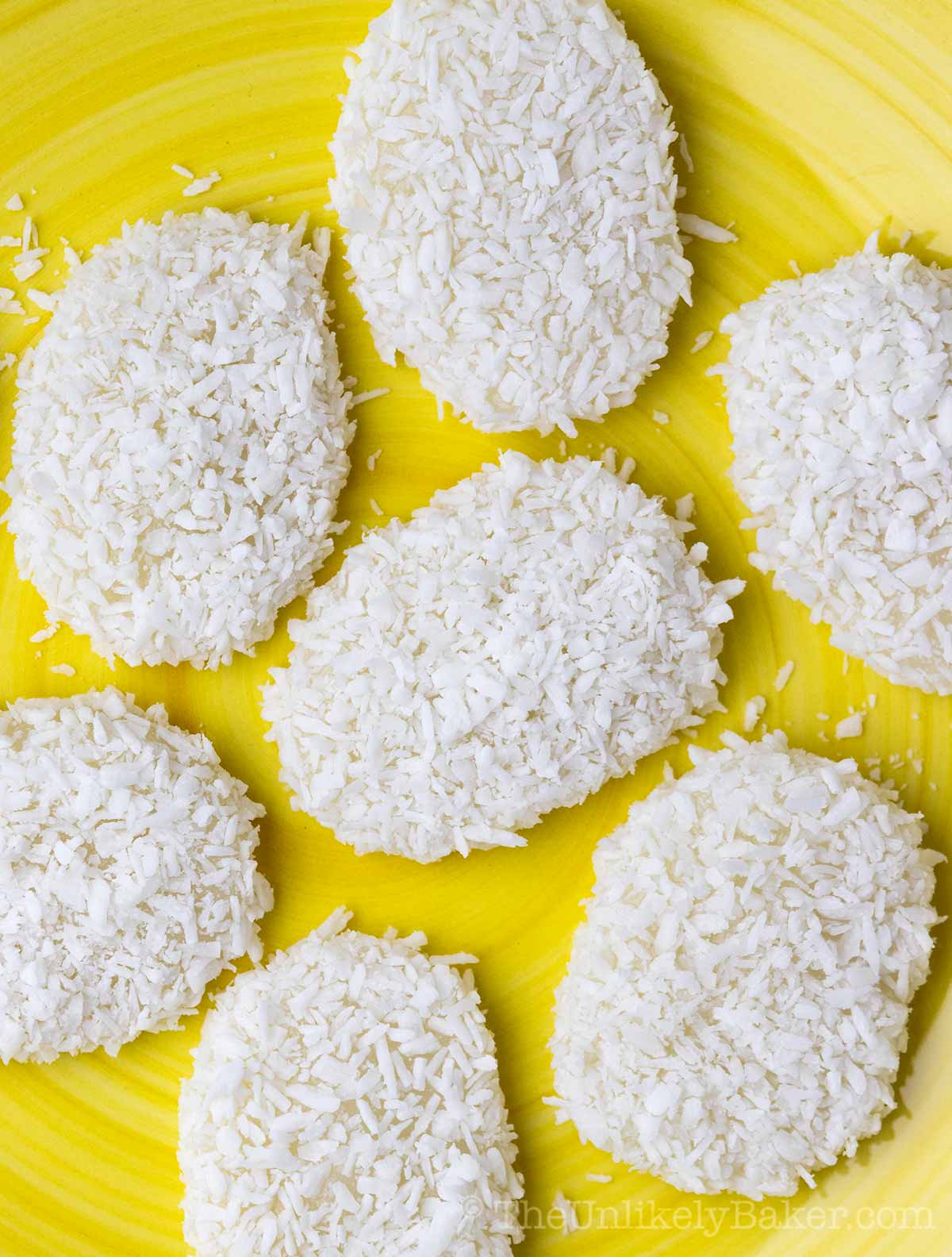
Simple and straightforward, right? Here are more tips to make the method for making palitaw that much easier.
- Palitaw dough. The key to the perfect palitaw is its texture — chewy but has a certain bite to it (makunat in Tagalog). So you’ll need to knead the dough just right. It has to come together into a ball — if it crumbles like feta cheese, you’ll need to knead some more. But don’t knead too much that it hardens — you want it to remain soft and pliable.
- Size. It doesn’t matter how big or small you make your rice cakes as long as you make them roughly the same size so they cook evenly. You’ll also want to flatten them no thinner than ¼ inch thick. I use a melon baller or a small cookie scoop to make sure my rice cakes are even.
- Cook in small batches. Cook your palitaw in batches so they don’t stick to one another in the pot. If you pour everything in there, you’ll have one big giant palitaw problem! Don’t worry, it only takes a few minutes to cook each batch so you’ll be done in no time.
- Don’t over cook. And watch over them while cooking. Once they float to the surface, scoop them out with a slotted spoon immediately because overcooking will result to tough palitaw.
- Drain well. It’s also important to drain them well before coating in coconut; I place them on a baking sheet with parchment paper.
- Coat well. Once they’re cool enough to handle and most of the water has drained off, coat them in coconut. You’ll want to coat them well so the whole palitaw is covered. These rice cakes are very sticky but becomes manageable once coated.
- Sprinkle sugar only when about to serve. You should only sprinkle sugar and toasted sesame seeds on your palitaw when you’re just about to serve them. Doing so beforehand or too soon will melt the sugar and make the palitaw too soggy.
Recipe FAQs
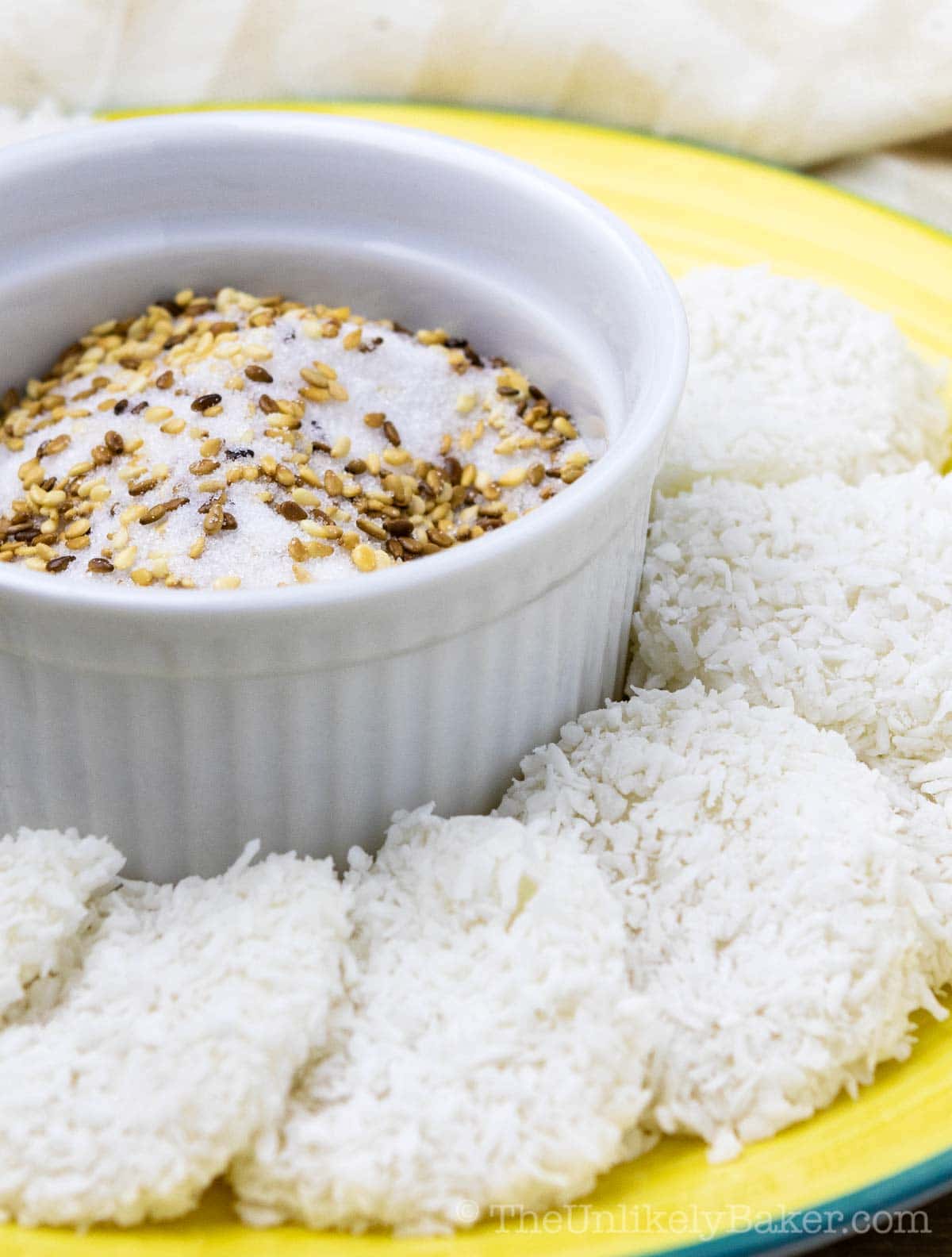
Got questions about ingredients, storage and more? Find the answers here.
Its texture is very similar to mochi but softer. The rice cake itself is bland. It gets all its flavour from the coconut coating and the sugar-sesame seed topping.
Palitaw is a popular Filipino kakanin. The word “kakanin” is derived from “kanin” or cooked rice and “kain” or eat. It’s a general term used for Filipino delicacies made with sticky rice or glutinous rice flour.
Glutinous rice flour or sweet rice flour is ground from short-grain glutinous rice or sticky rice. And even though it’s called glutinous, glutinous rice flour is actually gluten-free.
And don’t let the fact that it’s sometimes called “sweet” throw you off either. It’s not sweet at all. It has a very mild, milky flavour. You can read all about glutinous rice flour here.
And here’s a great article on glutinous rice flour uses.
Glutinous rice flour is different from rice flour. They’re made from different rice varieties and glutinous rice flour has more chew, i.e. makes dishes like desserts more chewy.
Here’s a really informative article if you want to know more.
Mochiko is a common type of glutinous rice flour and often used in Japanese cooking.
There are common glutinous rice flour substitutes when used as a thickener, like cornstarch and potato starch. For baked goods, tapioca flour is also commonly used.
I haven’t used any of them when making palitaw so I can’t say how they will affect the recipe. I recommend sticking to glutinous rice flour in this case.
Rice flour in Tagalog is “harina sa bigas”. But like I said, there are many kinds of rice flour so make sure you’re buying the correct one needed for your recipe.
If you used freshly grated coconut to coat your palitaw, you should consume palitaw the same day they’re made. Fresh coconut tends to go stale quicker and palitaw coated with them spoils quicker too.
However, this palitaw recipe uses dried shredded coconut and that helps keep the palitaw fresher longer. Kept in the fridge, it should last up to a week.
To store these Filipino sweet rice balls, coat them in shredded coconut then keep them in an airtight container or a platter wrapped snugly in plastic wrap.
When ready to serve, microwave for 20-30 seconds then sprinkle with sugar and sesame seeds.
They will be perfectly chewy and delicious. I personally prefer 2-day old palitaw; it achieves that perfect texture I’m looking for.
Easy Filipino desserts recipes
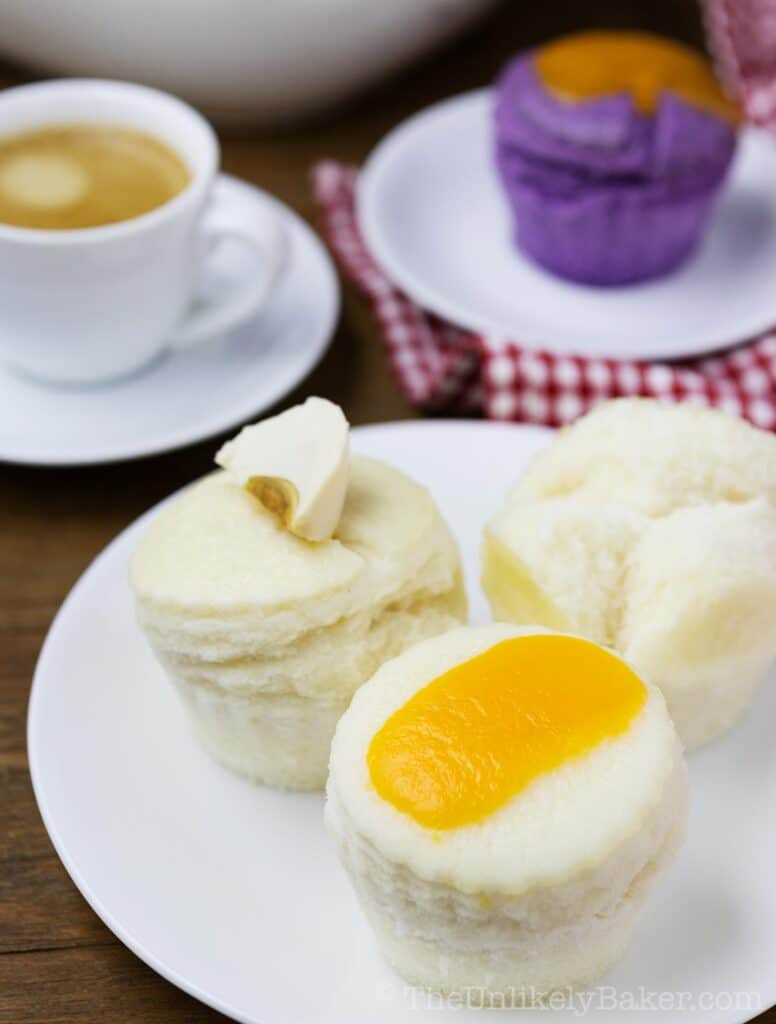
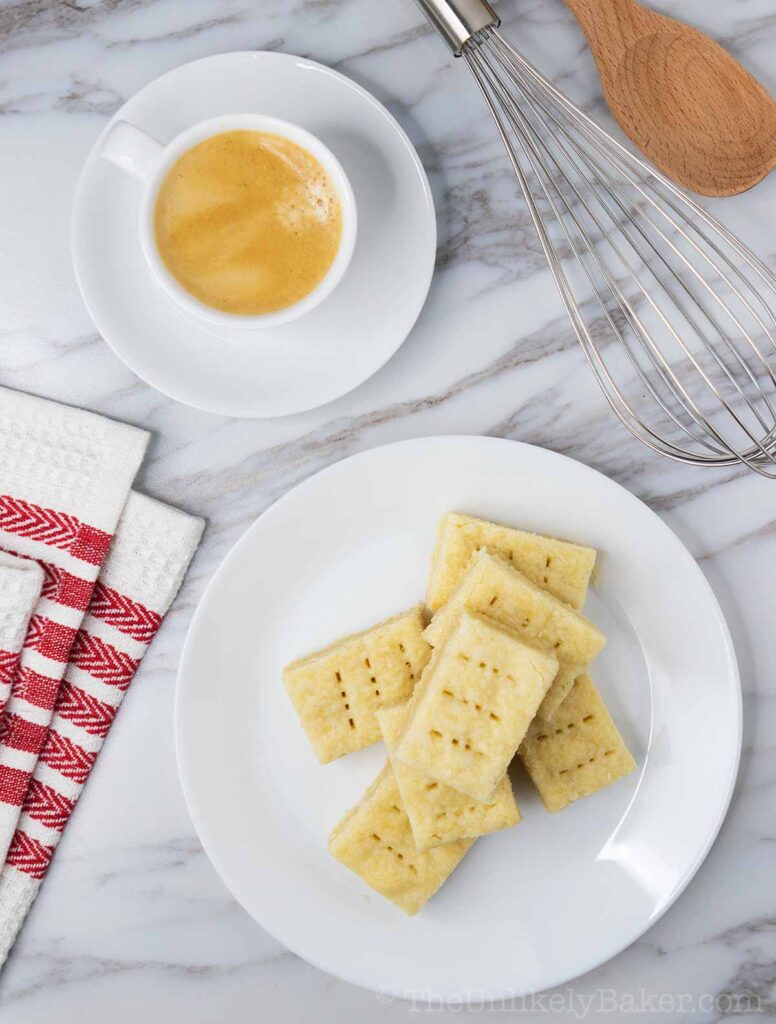
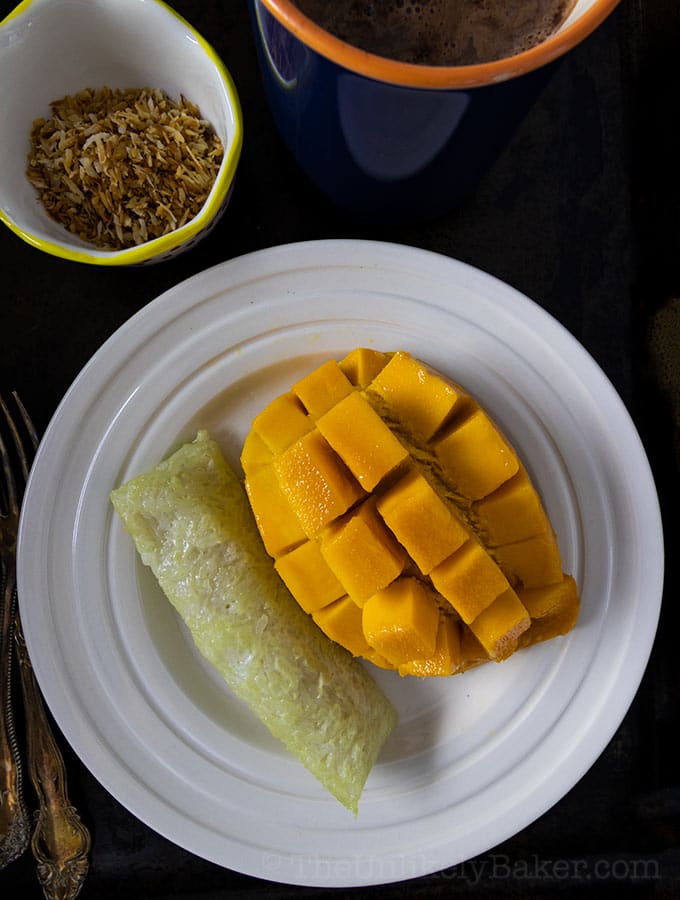
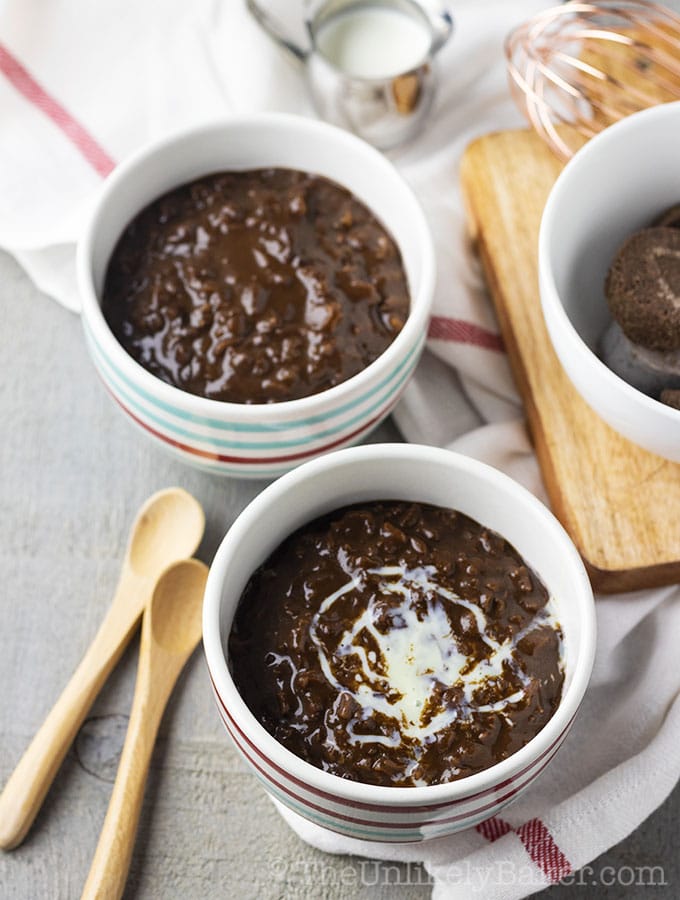
Rice is a big part of Philippine culture so it’s no surprise that we eat it for breakfast, lunch, dinner and dessert! Here are more Filipino rice flour recipes and glutinous rice recipes you can explore.
Desserts made with rice flour
- This puto recipe (or Filipino steamed rice cakes) is so easy to make and very customizable so you can use the same recipe to make a wide variety of puto flavours.
- These buttery shortbread cookies are technically not a Filipino recipe but they are soft, buttery and melts in your mouth. Plus, the recipe uses ¼ cup rice flour in case you’re looking for something to use extra rice flour up.
Recipes using glutinous rice
- Suman is a Filipino snack that’s made of glutinous rice and coconut milk, wrapped in banana leaves and steamed to sticky perfection. Eat it with mangoes in the summer or dip it in tsokolate in the winter.
- Champorado or Filipino chocolate rice porridge is a traditional Filipino breakfast. Made with sticky rice and pure cacao tablets, it’s rich, creamy and very chocolatey.
And check out this collection of recipes for Filipino desserts.
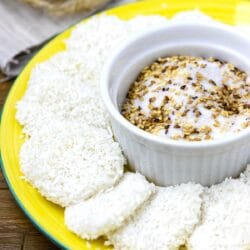
Palitaw Recipe
Ingredients
- ½ cup granulated sugar
- ¼ cup sesame seeds toasted
- 1½ cups glutinous rice flour see notes
- ¾ cup water
- 1 cup unsweetened shredded coconut can also use medium or desiccated coconut
Instructions
- In a small bowl, combine ½ cup granulated sugar and ¼ cup toasted sesame seeds. Set aside.

- In a large bowl, combine 1½ cups glutinous rice flour and ¾ cup water and knead until it comes together in a soft, smooth, pliable dough (see notes).

- Scoop and roll the dough into small balls using your hands then flatten into an oval about ¼ inch thick.

- Drop each palitaw into a pot of boiling water and cook until the palitaw floats to the surface (see notes). Repeat until you’ve cooked all of the rice cakes.

- Scoop the cooked palitaw using a slotted spoon and drain well by placing on a sheet of parchment paper. Space evenly so they don’t stick together.

- While still warm, coat the palitaw in shredded coconut.

- And when ready to serve, sprinkle with your sugar-sesame seed mixture. Enjoy!

Video
Notes
- Yield depends on how big you make your palitaw. I roll them in 1-inch balls, flattened to 2-inch ovals and get 30-34 pieces of palitaw from this recipe.
- If your palitaw dough is too sticky, add glutinous rice flour 1 tablespoon at a time until it becomes manageable. But don’t add more than 4 tablespoons.
- When making palitaw dough, I start stirring the mixture with a wooden spoon then proceed to knead with my hands when the dough becomes too difficult to stir.
- When boiling palitaw, do so a few pieces at a time so they’re not overcrowded in the pot. Otherwise they will stick together.
- See the post for the complete step-by-step photos, lots of cooking tips, and FAQs.
Nutrition
Nutritional information are estimates only.
Happy cooking!
Did you make this glutinous rice flour dessert? I’d love to hear from you in the comments section below.
And let’s get social! Find me on Facebook, Pinterest, Instagram, Twitter and YouTube.

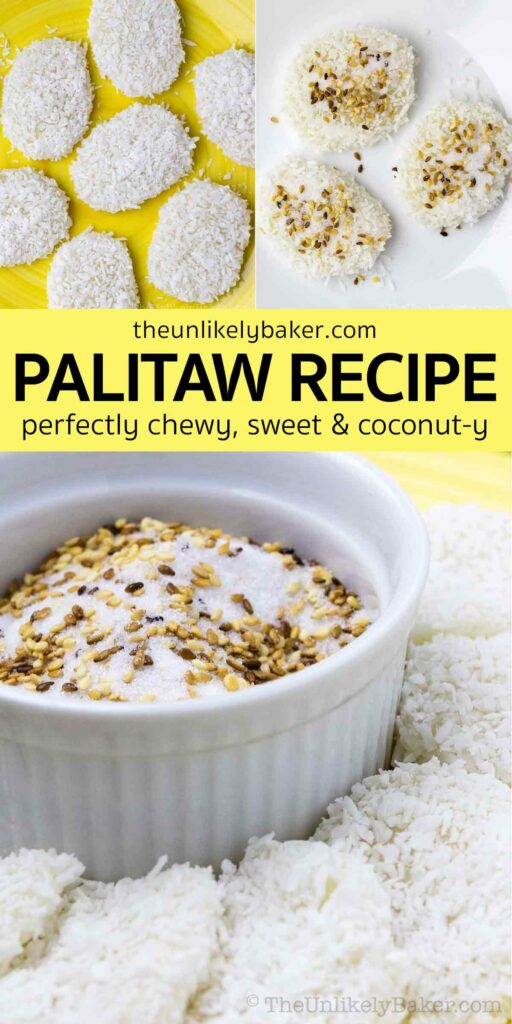
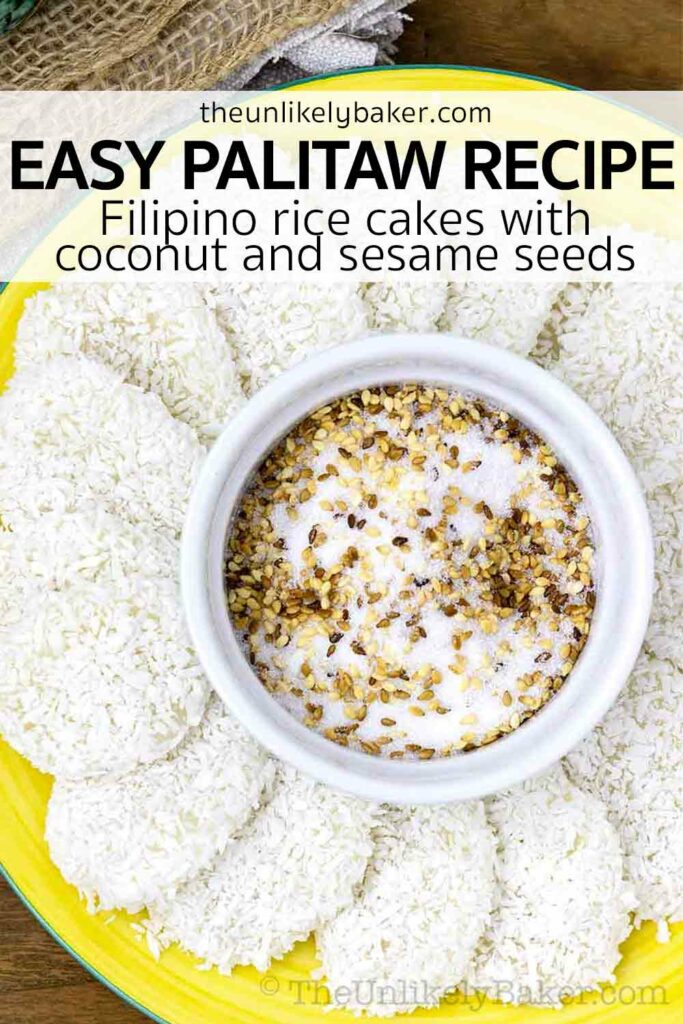
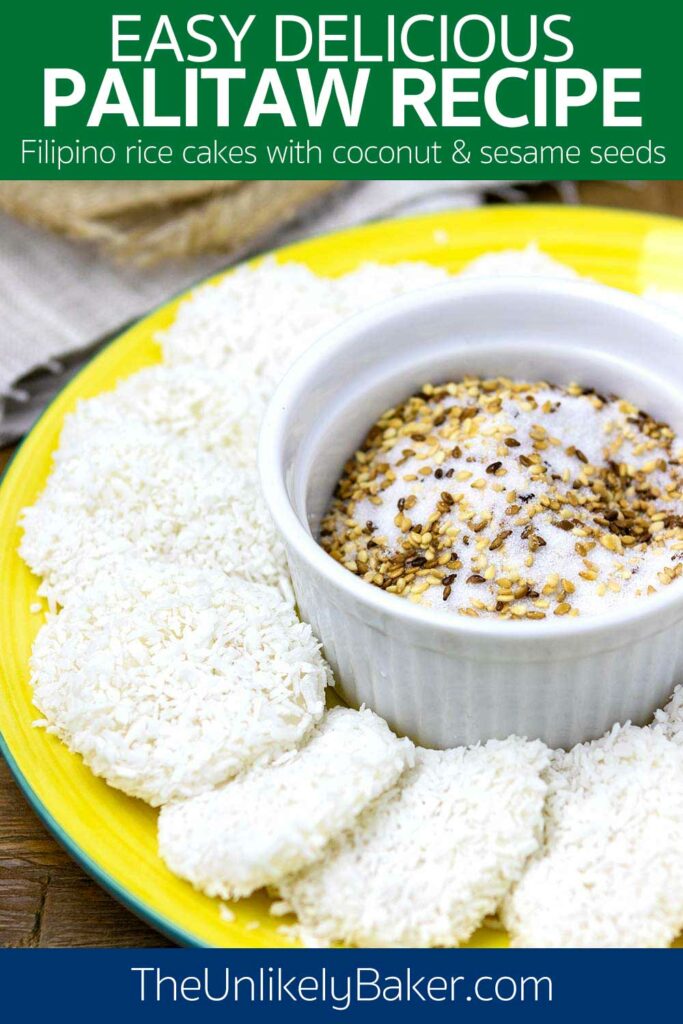
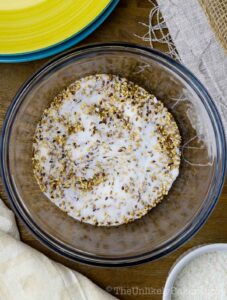
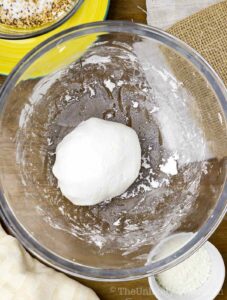
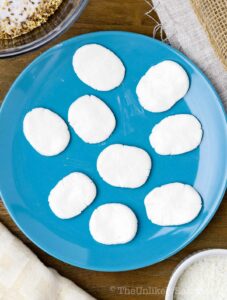
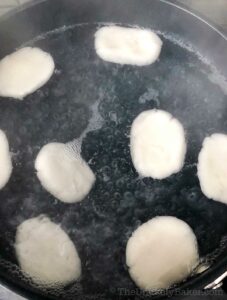
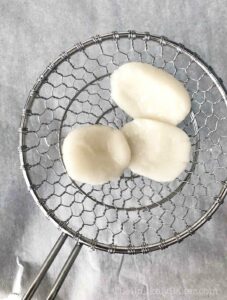
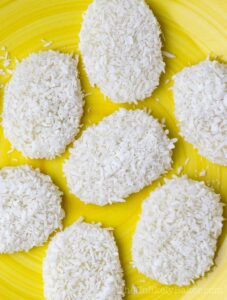
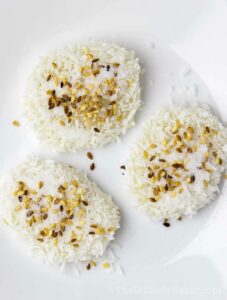
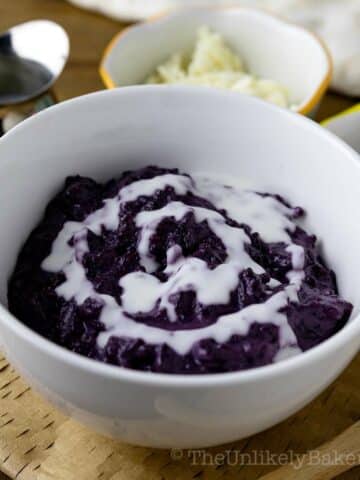
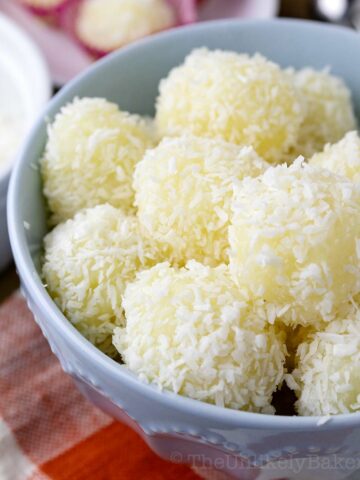
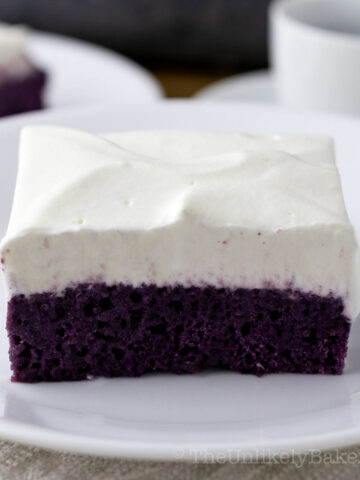
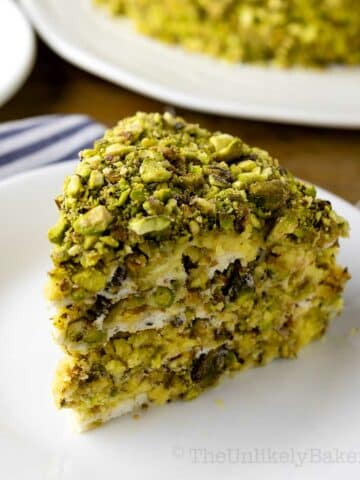
Juyali
Delicious! I had tried these at a restaurant and wanted to make them at home. Easier that I expected! 🙂
Jolina
Glad you liked them Juyali!
Marta
This was authentic tasting and easy to make. Grand kids loved it.
Jolina
Happy to hear that Marta!
Carmen
We loved palitaw back home so we had them for noche buena for the first time. Had the kids my little elves make the balls hehe. Thanks for the recipe!!
Jolina
Glad you liked them Carmen! And yay for your little elves helping out 🙂
Linda
Love trying out new recipes and this one is my new favorite. Chewy and perfect for a quick bite
Jolina
Glad you liked them Linda!
Sol
Wow! Palitaw is one of my favorite Filipino merienda, and I love it being served as a bit warm.
Jolina
Me too! And I can eat many many many pieces of palitaw in one sitting lol!
Lynndee
Palitaw is my favorite among the “kakanins.” I actually made some a few weeks ago. Yum!
Jolina
Seems palitaw is everyone’s favourite! 🙂
Swathi
This filipino rice cakes looks delicious I would love to check it out as coconut and seasme seeds are my favorite.
Catalina
Oh my goodness! These Filipino rice cakes look so inviting! A must make recipe!
Jenn
I love trying the cuisine from other countries. These rice cakes look and sound so delicious !!
Ivan Jose
This is one of my most favorite desserts. I once thought that this was somehow complicated to make but it turned out to be very simple.
Eileen M Loya
It has been a long time since I made palitaw. I should get some rice flour and make this for the family. I remember my mom soaking some glutinous rice in a bowl of water overnight and then putting it in the food processor to turn it into a paste-like consistency. That is what she uses to make palitaw instead of rice flour.
Jolina
Yes! I think my lola would use her mortar and pestle to grind the rice sometimes 🙂
Kathy
I would love to give these a try. I love rice cakes. I’ve never made them myself though.
Hollie
Wow these look good. I am a huge fan of rice cakes. I would have never thought to add coconut. I think I will have too now!
Monica Simpson
I love how simple this recipe is and that it doesn’t require baking.
Amber Myers
These sound incredible! I have never had them before, but I am sure I will be a fan.